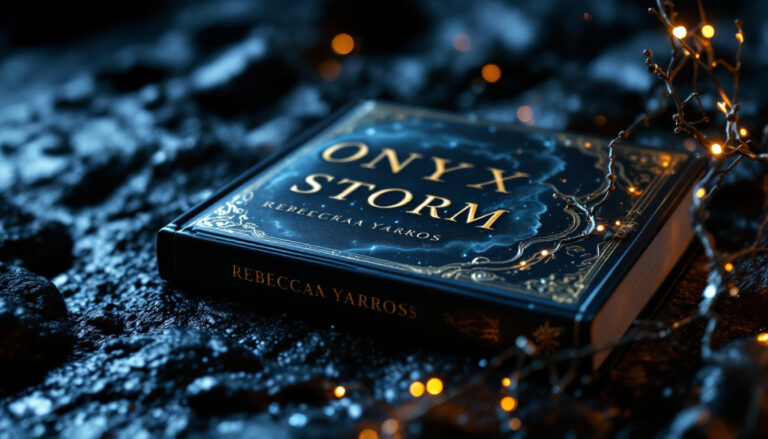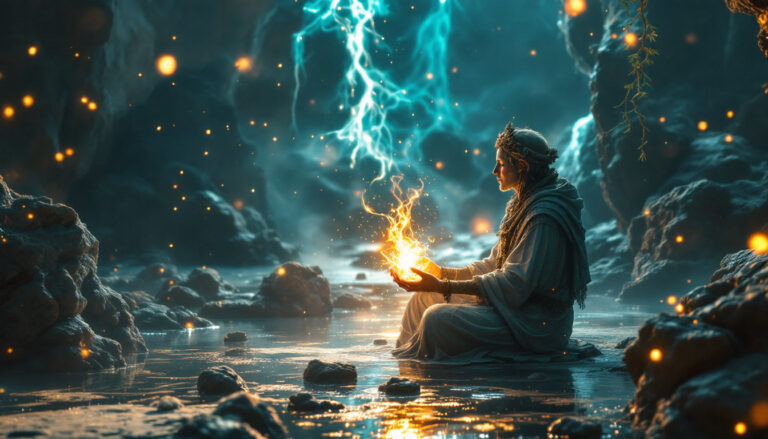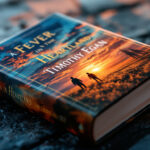The Clockwork Angel – An Engaging Review of C. Clare’s Steampunk Fantasy
Step into the enchanting streets of Victorian London, where shadows dance and secrets lurk around every corner. The Clockwork Angel, the first book in Cassandra Clare’s Infernal Devices series, invites readers to explore a world teeming with supernatural intrigue. At the heart of the story is Tessa Gray, a young woman with a mysterious past and shapeshifting abilities, who finds herself swept into a web of danger and adventure as she searches for her missing brother.
As you journey through this steampunk-infused narrative, you’ll encounter a host of dynamic characters, including the charming yet troubled Shadowhunters, Will Herondale and Jem Carstairs. Together, they face the dark forces of the Pandemonium Club and the terrifying clockwork creatures that threaten to unleash chaos. The mix of romance, danger, and friendship sets the stage for a tale that weaves together the complexities of love and loyalty.
Join us as we unpack the intricate layers of The Clockwork Angel, exploring the characters, themes, and Clare’s unique storytelling style that has captured the hearts of readers across generations. Whether you’re a lifelong fan or new to this captivating universe, this review promises to illuminate the magical journey awaiting you.
Overview of the Plot
The Clockwork Angel follows Tessa Gray, a young woman who embarks on a life-changing journey to Victorian London in search of her missing brother, Nathaniel. Upon her arrival, Tessa confronts a dangerous world filled with supernatural beings and clockwork creatures, all while discovering her own unique abilities. Let’s explore the key aspects of the plot that make this story so captivating.
Meeting Tessa Gray
Tessa Gray’s journey begins with heartbreak and uncertainty. After the death of her beloved aunt, she travels to London, hopeful to reunite with her brother. However, her arrival does not unfold as planned; she is quickly kidnapped by the Dark Sisters, who belong to a secret organization and intend to use her for their own sinister purposes. This harrowing experience brings to light her abilities: Tessa is a shapeshifter, capable of transforming into anyone she wishes. This rare power shapes her identity, leading her on a path filled with challenges, self-discovery, and adventure. Tessa’s initial struggles, paired with her determination to find Nathaniel, create a compelling central conflict that keeps readers engaged. For more on Tessa Gray’s character development, check out this Tessa Gray | The Shadowhunters’ Wiki.
The Shadowhunter World Unveiled
As Tessa navigates this new world, she is introduced to the Shadowhunters, a group of demon hunters tasked with protecting the human realm from dark forces. The Shadowhunters are part of a larger society, marked by their abilities and supernatural lineage. The intricate structure of this hidden world, which includes Downworlders and various magical creatures, adds depth to the narrative. Tessa learns about the history, traditions, and unbreakable bonds that define the Shadowhunter community. The lore is rich and fascinating, providing layers to the story as Tessa discovers her place within it. For an overview of the Shadowhunter universe, you might enjoy this guide: Beginner’s Guide: The Shadowhunter Universe.
Conflict with the Pandemonium Club
Central to the tension in The Clockwork Angel is the antagonistic role played by the Pandemonium Club. This secret organization is composed of mundanes deeply fascinated by the Shadow World. Unfortunately for Tessa, the club’s members include the malevolent Dark Sisters, who have devious plans for her and her shapeshifting abilities. The Pandemonium Club’s sinister clockwork creatures serve as both physical and metaphorical challenges for Tessa and her new allies. As they combat these mechanical foes, the stakes are raised, and the dangers of Tessa’s predicament become more pronounced. To explore more about the Pandemonium Club’s role in the story, check this link: Pandemonium Club – The Shadowhunters’ Wiki.
In summary, the plot of The Clockwork Angel takes readers on an unforgettable ride through a gothic Victorian world, highlighting Tessa’s growth amidst the lurking shadows. Her struggles, the unveiling of the Shadowhunter society, and confrontations with the Pandemonium Club intertwine to create a gripping narrative that captivates readers at every turn.
Victorian London: A Steampunk Fantasy Setting
Cassandra Clare expertly immerses readers in the vibrant yet gritty atmosphere of Victorian London in The Clockwork Angel. The story is not just a mere backdrop; it becomes a living character in itself. Through skillful depictions of the era’s norms and societal expectations, Clare weaves a blend of history and fantasy that captivates the imagination.
The Intersection of History and Fantasy
In The Clockwork Angel, the echoes of Victorian London resonate through every page. Clare presents a world filled with gaslit streets, lavish balls, and the unyielding class structures characteristic of the era. She captures the essence of daily life, with characters who grapple with the expectations of society while navigating their supernatural destinies. The social mores of the time, particularly regarding gender roles, are apparent in Tessa Gray’s journey. As a woman, Tessa defies conventions, discovering her own strength and identity in a world that often seeks to confine her.
The intricate details regarding fashion, language, and rituals help ground the readers in this time. For those eager to explore the finer points of Victorian norms, resources like The Infernal Devices Archives offers a deeper look at how Clare’s characters evolve within these confines. The juxtaposition of historical authenticity and fantastical elements creates a rich tapestry that enhances the story, making readers feel as if they are walking alongside Tessa in this reimagined London.
Steampunk Themes Explored
Steampunk elements serve as a key facet of Clare’s narrative, blending the past with imaginative technology. Clockwork automatons and mechanical devices populate the streets and homes, offering a unique twist on the Victorian reality. These machines are not mere props; they are integral to the plot, serving both as tools and adversaries that add layers of complexity to Tessa’s challenges.
The presence of these clockwork beings raises questions about humanity and the nature of life itself. Are these constructs mere machines, or do they possess a semblance of consciousness? Through her characters’ interactions with these mechanical adversaries, Clare engages readers in a dialogue about creation, identity, and the moral implications of technological advancement. For an exploration of the role of steampunk in literature, the article A Primer on Steampunk Literature provides insights into how this genre extends beyond Clare’s works.
The thrilling experiences that Tessa and her companions encounter punctuate the narrative, highlighting the dangers posed by these lifelike constructs. As the characters navigate their blend of magic and machinery, readers are treated to an imaginative spectacle that invites them to ponder the possibilities of a world where the past and future collide. The steampunk aesthetic breathes life into this reimagined Victorian setting, encouraging readers to lose themselves in a fantastical exploration of what could have been.
Complex and Relatable Characters
The Clockwork Angel boasts a rich tapestry of characters, each with distinct traits and intricate dynamics. Cassandra Clare’s characters are multidimensional, drawing readers into their personal struggles, evolving relationships, and the world around them. Let’s take a closer look at some key figures.
Tessa Gray: More Than a Damsel in Distress
Tessa Gray embodies resilience and transformation. Initially thrust into peril as a captive of the sinister Dark Sisters, she soon discovers her unique shapeshifting ability, which allows her to become anyone she wishes. This power serves as both a blessing and a burden, mirroring her internal struggles with identity and agency. Tessa’s journey reflects the quest for self-acceptance amid chaos. As she navigates the dangers of the Shadowhunter world, she evolves from a sheltered girl yearning for family into a courageous woman who embraces her powers. Her growth captivates readers, highlighting the importance of self-discovery even in the face of adversity. For more about Tessa Gray’s character development, check out the Tessa Gray | The Shadowhunters’ Wiki.
Will Herondale: The Mysterious Shadowhunter
Will Herondale is a quintessential “bad boy” wrapped in mystery. Portrayed as clever yet aloof, he uses sarcasm to mask his deeper vulnerabilities. His guarded personality stems from a troubled past filled with emotional scars, making him a challenging friend yet a loyal ally. Will’s interactions often oscillate between teasing and intense emotion, especially in his complex relationship with Tessa and Jem. This love-hate dynamic adds layers to his character, making him relatable and compelling. Readers are drawn to his internal conflicts and want to uncover the truths behind his enigmatic facade. To explore more about Will’s character, visit Will Herondale | The Shadowhunters’ Wiki.
Jem Carstairs: The Gentle Soul
As the most compassionate character in the trio, Jem Carstairs provides a soothing contrast to Will’s intensity. Despite his delicate health owing to a demonic drug addiction, Jem embodies kindness and loyalty. His struggles with his condition create a sense of urgency in his relationships, particularly with Tessa and Will. Jem’s gentleness enhances his heroism, and his dedication to his friends showcases the themes of brotherhood and sacrifice. His partnership with Will is a poignant exploration of friendship, marked by a mutual understanding of each other’s pain and aspirations. For insights into Jem’s character, check out Jem Carstairs | The Shadowhunters’ Wiki.
Other Memorable Characters
The world of The Clockwork Angel is further enriched by a cast of memorable supporting characters:
- Charlotte Branwell: As the leader of the London Institute, Charlotte eschews traditional gender roles of the time by demonstrating strength and influence in a male-dominated society.
- Jessamine Lovelace: Initially appearing self-absorbed, Jessamine provides comic relief, yet her character arc reveals deeper insecurities and desires for independence.
- Sophie: A devoted maid with a hidden knack for bravery, Sophie highlights themes of loyalty and sacrifice, stepping up when her friends are in need.
- Magnus Bane: As the charming warlock, Magnus adds layers of complexity with his flamboyant persona, offering both magic and wit in moments of tension. His presence enriches the Shadowhunter universe, blurring lines between ally and foe.
Together, these characters weave a narrative brimming with deep emotions, evolving friendships, and wondrous conflicts. Their struggles and triumphs resonate within readers, making The Clockwork Angel not just a story, but an exploration of what it means to be human in an extraordinary world.
Themes and Messages
In The Clockwork Angel, Cassandra Clare weaves a rich tapestry of themes that resonate deeply with readers. At the heart of the story are elements of love, identity, and moral struggles. These themes propel the narrative forward, revealing profound insights into human nature and relationships. Let’s explore some of the most significant themes threaded throughout the story.
Love and Friendship
The love triangle between Tessa, Will, and Jem serves as a poignant exploration of love and friendship. This dynamic is not merely about choosing one partner over another; it reflects the intricate bonds and sacrifices inherent in loving relationships. Tessa finds herself torn between her romantic feelings for Will and her deep friendship with Jem. Both relationships offer her different forms of love—Will represents passion and intensity, while Jem embodies safety and companionship.
The concept of parabatai is crucial here. Parabatai are warlocks connected by a bond that transcends friendship, solidifying their loyalty and commitment to each other. Will and Jem’s bond as parabatai adds complexity to Tessa’s relationships with both characters. This theme highlights how love can be fierce, complicated, and transformative. It’s a reminder that friendship can often embrace the complexities of love, making it all the more precious. For a deeper analysis of this love triangle, check out this article on The Infernal Devices’ love dynamics.
Identity and Belonging
Tessa’s journey is not only about physical challenges but also a quest for identity and belonging. As a shapeshifter, she grapples with the question of who she truly is. Can she find her identity when she can literally become anyone? This theme resonates powerfully as Tessa encounters others who also struggle to define themselves in a world that often seeks to categorize and confine them.
The narrative recognizes the struggle for self-discovery and acceptance, particularly in a fantastical world full of overwhelming expectations. Tessa’s ability to change her form mirrors her internal conflict—she yearns for genuine connections that affirm her identity rather than her abilities. As she navigates friendships and romantic entanglements, she learns that true belonging comes from embracing her true self. This reflects a universal theme for readers of all ages, showing that the search for acceptance is a common thread in everyone’s life. To explore more about themes of identity in The Clockwork Angel, you can find useful insights here.
Morality and Authority
The balance of power and moral dilemmas permeates the narrative, particularly as the characters face formidable foes in the form of the Pandemonium Club and its devious members. Throughout the story, Tessa, Will, and Jem wrestle with questions of morality. What does it mean to protect those we love when the stakes are high? Is it ever justifiable to break the rules for a greater good?
The characters are often placed in situations where their loyalty and ethics are tested, revealing the tension between authority and justice. Their choices highlight that the line between right and wrong can often blur, challenging readers to think critically about the nature of morality in their own lives. This exploration provides a thought-provoking backdrop to the story, prompting readers to consider their own values when faced with difficult decisions.
In summary, The Clockwork Angel is much more than a fantasy adventure; it’s a poignant examination of love, identity, and moral integrity. Cassandra Clare invites readers to reflect on their own experiences and relationships through her engaging narrative. For a broader understanding of the themes in this book, consider visiting this comprehensive summary here.
Final Thoughts on Writing Style and Pacing
Cassandra Clare’s narrative style in The Clockwork Angel captivates readers through a seamless weaving of intricate world-building, dynamic characters, and a well-paced storyline. Her ability to create an engaging flow while balancing excitement with heartfelt moments is a testament to her skill as a storyteller.
Narrative Flow and Chapter Structure
From the very first chapter, Clare establishes a gripping narrative flow. The story unfolds at a pace that balances tension and relief, allowing readers to immerse themselves fully into the world of Victorian London. The chapter structure is thoughtfully crafted, often leaving intriguing cliffhangers that encourage readers to turn the page eagerly.
Clare drops hints and clues throughout the narrative, producing a steady rhythm that keeps readers engaged. Every few pages, she introduces twists that propel the story forward while enriching the character arcs. This method ensures that no moment feels wasted, making readers feel as though they are part of Tessa’s adventure. For insights on how Clare maintains this engaging pacing, check out this review on Clockwork Angel.
Balancing Action and Emotion
One of Clare’s strengths lies in her ability to navigate between exhilarating action scenes and profound emotional moments seamlessly. Readers find themselves immersed in pulse-pounding encounters with clockwork creatures one moment and then reflecting on Tessa’s vulnerabilities in the next. This balance enhances the overall reading experience, allowing the stakes of the conflicts to resonate on a deeper emotional level.
Clare demonstrates mastery in creating relatable characters while also maintaining their distinct personalities. In moments of crisis, the characters’ responses often evoke laughter, sadness, or tension, inviting readers to empathize with them. This blend makes the story not just about the battles fought but also about the relationships forged in their midst. For more thoughts on Clare’s approach to character dynamics, visit this discussion on Cassandra Clare’s writing.
The interplay of action and emotion in The Clockwork Angel makes it a compelling read. Whether through moments of camaraderie, vulnerability, or chaos, Clare ensures that readers feel invested in her characters’ journeys, making each twist and turn of the narrative all the more impactful.
Conclusion
The Clockwork Angel stands as a testament to Cassandra Clare’s ability to blend rich world-building with compelling character growth. Readers are drawn into the intricacies of Victorian London while navigating Tessa’s journey of self-discovery and empowerment. The dynamic between the characters not only adds depth but also explores the themes of love, identity, and friendship in profound ways.
For those intrigued by a captivating tale woven with magic, danger, and emotion, this book is a must-read. It invites you to not just follow Tessa’s adventure but to reflect on your own journey of growth and acceptance. Don’t miss the chance to immerse yourself in this enchanting world. Have you explored the Shadowhunter universe yet? Whether you’re new to Clare’s writing or revisiting it, there’s always something fresh to discover. Share your thoughts and experiences below!







